Dear Readers, Amaranth is one of the miracle cereals from the Andes. The grain, which is still often underestimated today, was considered a miracle cure for numerous diseases. With us, you will find out how healthy amaranth actually is and how best to use it.
Interesting facts about amaranth
Amaranth, which has been cultivated in the Andes for thousands of years, is still often underestimated today. The healing effects of the grain have long been proven.
The tiny seeds of the superfood, which are part of the foxweed family, have previously been used for health purposes.
Mainly because the plant is very undemanding and can grow almost anywhere.
Amaranth is one of the oldest cultivated plants in the world and was first cultivated in South and Central America, especially in the Andes.
Today, the grain-like grain is on the rise again, especially in Europe, and is more popular than ever. Especially because current studies are increasingly focusing on the healing effects of the tiny seeds.
Why amaranth is a pseudo-cereal
It is a so-called pseudo-cereal. It looks very similar to normal grains such as wheat or barley.
Amaranth does not belong to the botanical group of sweet grasses. Its big advantage over common grains is that it is gluten-free.
This makes it ideal for people with celiac disease or other gluten intolerances.
It can be used and prepared in different ways in the kitchen it can sometimes perfectly replace normal grains.
The structure of the proteins it contains has changed. This is why more and more people are suffering from gluten intolerance.
Or you may experience complaints of similar symptoms such as indigestion, flatulence, or headaches.
Amaranth and other cereals from the Andes, on the other hand, are mostly natural and have little to no genetic modification.
It is therefore becoming increasingly valuable for a balanced and healthy diet. It offers a good alternative to foods containing gluten and not just for people with intolerances.
Ingredients of Amaranth
Amaranth is particularly rich in healthy and essential nutrients. It’s not just the seeds themselves that can be eaten.
The leaves of the plant are also full of vitamins, valuable minerals, and essential amino acids.
The leaves taste similar to arugula and other leafy vegetables, mostly because of their slightly bitter note.
There is no type of grain that is as rich in iron, calcium, magnesium, or potassium as the pseudo-grain amaranth.
It is also generally low in fat but contains almost exclusively unsaturated and therefore healthy fatty acids such as Omega 6.
Similar to conventional grains, amaranth is very filling because of its high carbohydrate content, but it still contains significantly less glucose than well-known grains.
Amaranth is also rich in fiber, lecithin, vitamins E, B1, B2, and B9, as well as various minerals.
The particularly important ingredients of amaranth are the essential amino acids, which cannot be produced by the body itself and must be consumed through food.
The lysine, which is abundantly contained in amaranth, contributes significantly to the healing effects of the pseudo-grain. Lysine is one of the essential amino acids that the human body cannot produce itself.
The high protein content of around 16 percent also makes amaranth an important one.
Protein source: No other type of grain has such high protein content as amaranth.
That’s why it’s not only ideal for vegans and vegetarians who avoid animal protein.
Amaranth is also the ideal food for competitive athletes and runners.
On the one hand, you can promote muscle building and at the same time stimulate fat burning.
In addition, amaranth also provides valuable and essential nutrients and vitamins that competitive athletes need for more power and a healthy diet.
Effects of amaranth
In fact, more and more studies have recently proven the positive effects of seeds.
Amaranth has been proven to be particularly effective against diarrhea, fever, and headaches.
But it also has health benefits for menstrual cramps and sleep disorders. Amaranth can also lower high blood pressure and help against anemia and iron deficiency.
For gastrointestinal diseases and gluten allergies
Often people who do not have celiac disease suffer from similar symptoms of gluten intolerance. These are not at all dissimilar to those of irritable bowel syndrome.
They often manifest themselves in nausea, headaches, flatulence, a feeling of fullness, and depressive moods.
In contrast to normal grains, amaranth has a calming effect on the gastrointestinal tract.
When consumed regularly, it can alleviate unpleasant symptoms such as digestive problems, flatulence, or heartburn.
The carbohydrates contained in amaranth are also easy to use, and the high amount of fiber also has a positive effect on intestinal health.
The high tolerability of the amaranth ingredients can often be explained by the quality of the seeds. Amaranth is rarely genetically modified and the grain can often only be bought in organic quality, for example in health food stores.
For people with celiac disease, amaranth is the perfect alternative to grains containing gluten. It can be processed in the kitchen in the same way and may not improve the clinical picture, but it can make life a little easier.
For healthy bones & beautiful skin
Lysine, which is largely found in amaranth, belongs to the group of essential amino acids. It must be consumed through food as our body cannot produce it itself.
Lysine plays an important role in energy metabolism and fat burning.
The amino acid also plays a key role in bone growth, wound healing and cell division.
Regular consumption of amaranth strengthens bones in the long term and also makes it easier for the body to form collagen.
Amaranth not only ensures healthy bones and a beautiful, young complexion. It is especially good for the embryo during pregnancy, as it supports the body in cell division and promotes bone growth.
Amaranth is also said to have an anti-cellulite effect, as the lysine it contains contributes significantly to the development of collagen and thus connective tissue.
In cancer
The amino acid also promises a healing effect against cancer. Scientific studies suggest that the lysine it contains can slow down or even stop the formation of metastases.
The anti-inflammatory effect of amaranth is responsible for this.
The body’s inflammatory response decreases and the body can heal better.
Lysine has also been proven to strengthen the immune system and can therefore ensure a more pleasant course of the disease.
To lose weight
Amaranth is also ideal for weight loss. It can be safely served instead of high-carbohydrate grains because it contains fewer carbohydrates than standard grains.
Amaranth contains even more proteins.
This not only ensures less sugar in the bloodstream but also stimulates fat-burning and promotes muscle growth.
In addition, the fiber and complex carbohydrates ensure long-lasting satiety and a stable blood sugar level.
This in turn prevents cravings and makes losing weight easier for many people.
The special thing about amaranth is that you don’t have to create new dishes. Instead, you can easily replace your usual grain with amaranth.
Against depression
It is already known and scientifically proven that there is a connection between diet and depression.
In general, a poor and unbalanced diet promotes neurological diseases.
A lot of meat, sugar, or processed foods in particular can increase a depressive mood.
What is new, however, is the finding that it can effectively counteract this and even prevent depression. The amino acid L-tryptophan, which is often found in the seeds, is responsible for this.
This amino acid is the basic ingredient for the happiness hormone serotonin and the sleep hormone melatonin.
If both hormones are produced in a balanced and harmonious manner, they ensure more balance, concentration, a good mood, and better sleep.
Ultimately, the whole thing is a cycle of your own well-being; those who sleep better and are in a good mood are also more motivated and less sensitive to stress.
This in turn relieves depression and calms the nervous system.
If you want to use amaranth specifically for your depression or mood, there is one thing you should keep in mind. To achieve the uplifting effect, you should take amaranth on an empty stomach.
The best way to do this is to mix the seeds with water and stir the whole thing until it has a consistency.
Alternatively, you can make tea from dried amaranth leaves and let it steep for about 5 to 10 minutes.
For vegetarians and vegans
Amaranth is not only rich in valuable ingredients. In addition, the grain-like grain is particularly suitable for vegans and vegetarians.
It is particularly valuable for people who avoid meat and other animal products because of its high iron content. Apart from that, amaranth can meet your daily protein requirements.
That’s why it’s also a real performance aid for athletes who eat a vegetarian diet.
Applications of Amaranth
There are countless ways to integrate and process amaranth into everyday kitchen life. Since it is one of the so-called pseudo-grains, it can sometimes be used as a substitute for conventional grains.
However, this does not apply to all dishes because amaranth lacks the beneficial
properties of a binding agent.
Even if most Amaranth products are offered in organic quality anyway, you should still always pay attention to this seal.
Only with the appropriate quality can the positive effects be guaranteed and contamination by harmful substances is ruled out.
In principle, the positive effects affect everyone and all age groups, but children under the age of two should only consume amaranth in very small amounts.
This is due to the small but still occurring amount of tannins, which could have a negative impact on the development of small children. However, amaranth should be safe for everyone from the age of three.
Amaranth leaves
The leaves of the amaranth plant were probably eaten in Europe as early as the Stone Age. They are also nutritious and can be prepared like other leafy vegetables.
Although they are very similar to preparing spinach, they are significantly lower in nitrates.
Ideally, only the young leaves should be used in the kitchen; in contrast to older leaves, they are very fine and not very bitter.
It’s best to cook them for about ten to fifteen minutes, after which they can be used as desired.
If the slightly bitter taste still bothers you, you should change the water once while cooking.
As a result, the bitter substances from the water are lost immediately and cannot attach themselves to the leaves again.
By the way, the dried leaves of the amaranth plant can also be used to make wonderful teas that achieve the same effects.
Among other things, the tea has a positive effect on inflammation and wounds in the mouth and throat area. It also relieves bad breath and optimally complements dental and oral care.
Amaranth puffed
The same process that turns corn into popcorn can also be applied to amaranth. To do this, add enough amaranth seeds to the pot so that they just cover the ground.
Then all you have to do is add enough oil to cover all the seeds.
If you want, you can add sugar or salt now, then all you have to do is heat the mixture.
To ensure nothing burns, you should keep moving the pot back and forth. The seeds will gradually pop up and can then be eaten as a snack.
Cook amaranth
Even in Inca times, it was common practice to boil the entire amaranth plant in water. It was then mashed into small pieces and drunk as juice.
The natives of South and Central America hoped that wounds would heal more quickly.
They also hoped that this would clean the inside and outside.
Even today, it is wonderful for cooking and is a delicious addition to soups, vegetable stir-fries, or casseroles.
However, amaranth is not suitable as a replacement for grains in bread mixes or other pastries.
The gluten found in normal grains acts similarly to an adhesive. It is a binding agent that holds the baking mixture together perfectly.
Amaranth lacks this glue. If you still want to add it to your baking mix, you should definitely mix the amaranth with conventional grains or other binding agents.
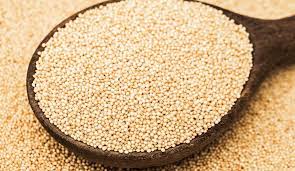
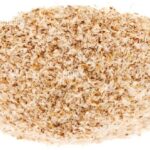


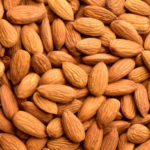
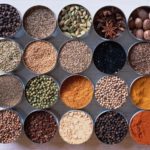
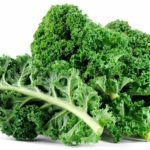

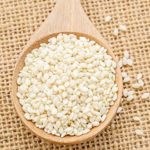





Leave a Reply